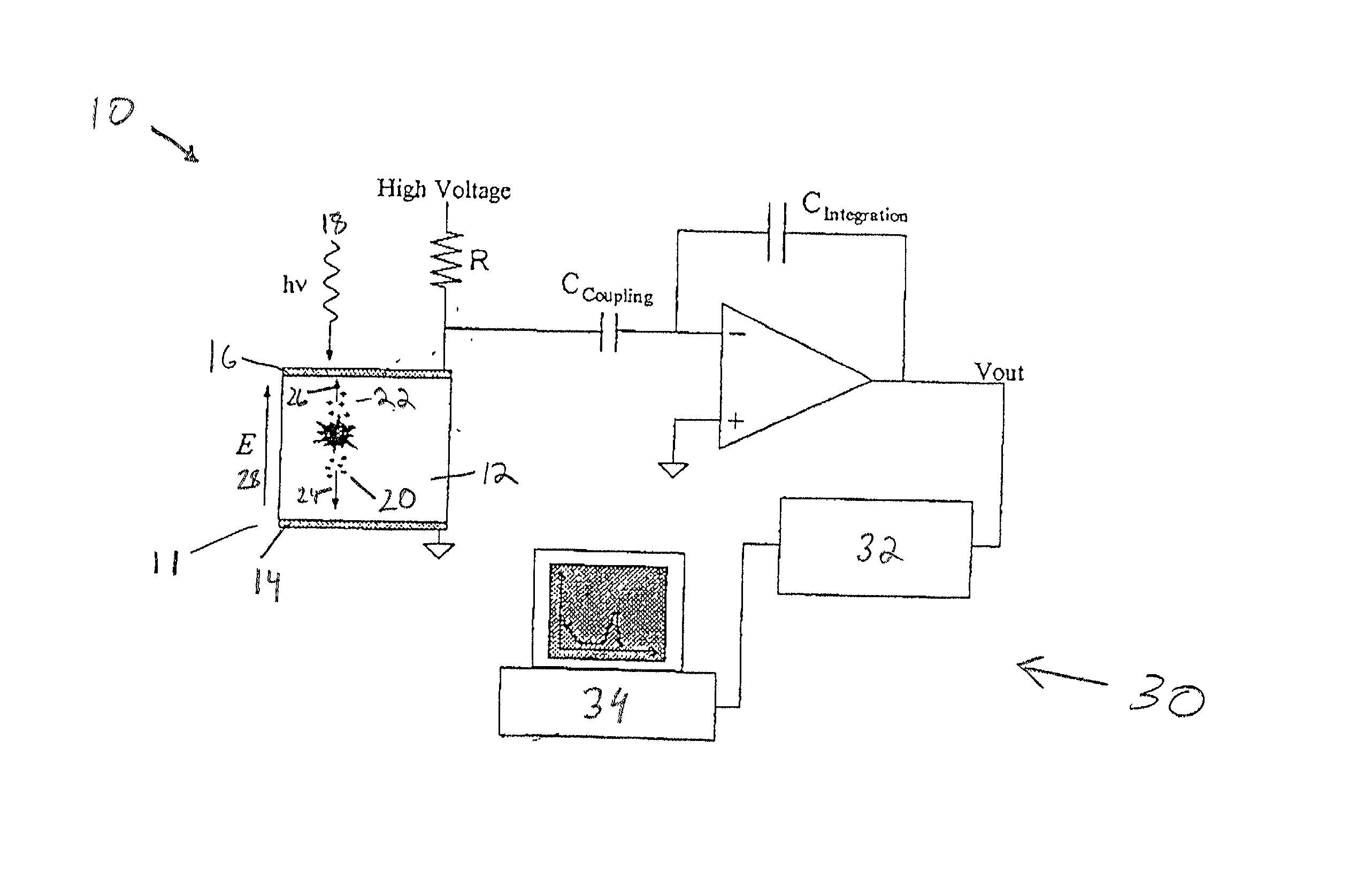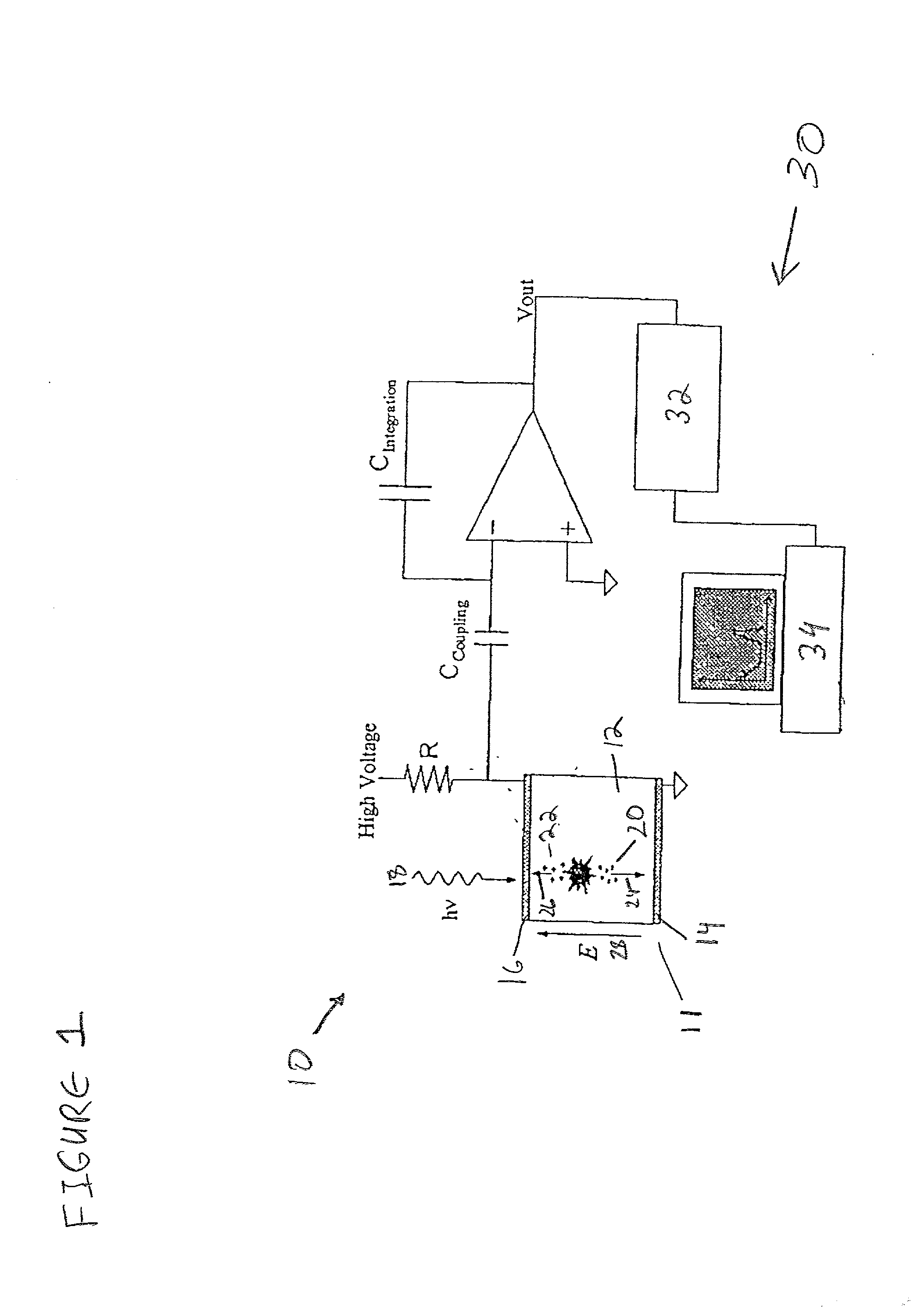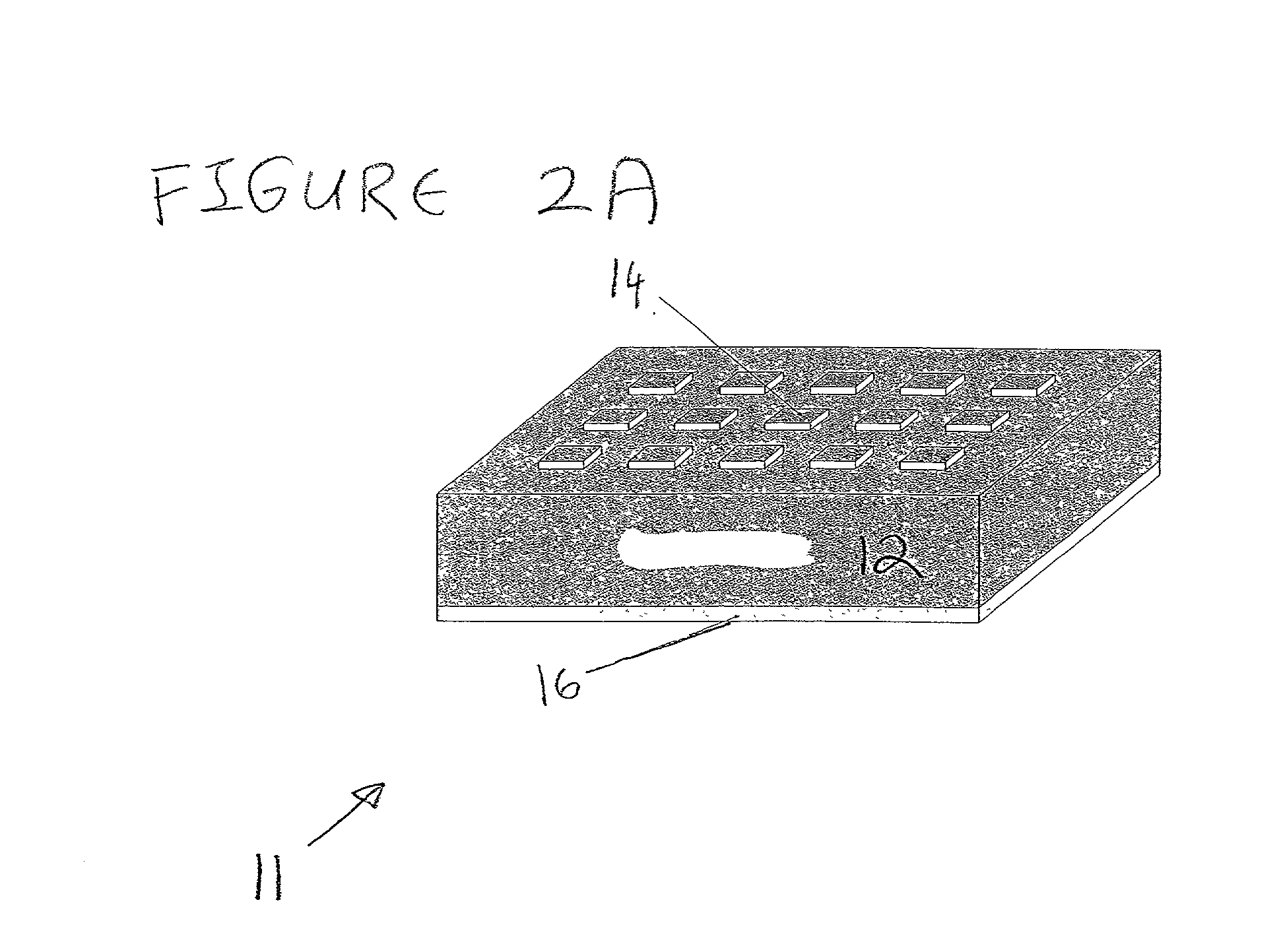Gamma ray detector
a detector and gamma ray technology, applied in the field of gamma ray detectors, can solve the problems of high dark current, large defect number of known semiconducting materials, and unsuitable crystals for detectors produced according to the methods known in the art, and achieve high dark current levels
- Summary
- Abstract
- Description
- Claims
- Application Information
AI Technical Summary
Problems solved by technology
Method used
Image
Examples
example 2
Reduction of Dark Current and Increased Uniformity of Detectors
[0071] Five CdZnTe detectors made from the same crystal (Yinnel Tech, Inc., South Bend, Indiana).
[0072] The dark current produced by the five detectors was initially measured without a guard ring (FIG. 5A) and with a guard ring (FIG. 5B). The detectors were then treated according to the method of the present invention as described immediately hereinbelow and the dark current produced was again measured without a guard ring (FIG. 5C) and with a guard ring (FIG. 5D).
[0073] The crystals were treated at a resonance frequency of 63.5 kHz (shear waves) for 30 minutes at an elevated ambient temperature (60.degree. C.) and with 0.35 mA / cm.sup.2 current density. 63.5 kHz was determined to be the resonance frequency of the piezoelectric crystal with the attached CdZnTe crystal.
[0074] As is seen from FIG. 5, the dark current produced decreased by more than an order of magnitude and the difference between the different detector beca...
example 3
Sensitivity and Resolution Improvement
[0075] A 1.times.1.times.0.2 cm.sup.3 CdZnTe detector with a gold backside contact and indium forward pixilated contacts was installed in a gamma ray spectrometer and used to detect the gamma ray spectrum of Am.sup.241, trace a in FIG. 6. The CdZnTe detector was removed from the spectrometer and attached to the piezoelectric crystal described above in Example 1 using paraffin. The frequency generator was used to apply a 70 kHz electric field to the piezoelectric crystal at a current intensity of 0.70 mA / cm.sup.2 (peak-to-peak) for 60 minutes. 70 kHz was determined to be a near yet off-resonance frequency of the piezoelectric crystal with the attached CdZnTe detector.
[0076] After acoustic treatment, the CdZnTe detector was detached from the piezoelectric crystal. Traces of paraffin were removed from the CdZnTe detector by heating and rinsing with alcohol. The CdZnTe detector was reinstalled in the gamma ray spectrometer. Trace b in FIG. 6 shows t...
example 4
Rescue of a Detector
[0077] A 1.times.1.times.0.2 cm.sup.3 CdZnTe detector with a gold backside contact and indium forward pixilated contacts was installed in a gamma ray spectrometer and used to detect the gamma ray spectrum of Co.sup.57, trace a in FIG. 7. The CdZnTe detector was removed from the spectrometer and attached to the piezoelectric crystal described above in Example 1 using photoresist. The frequency generator was used to apply a 5 kHz electric field to the piezoelectric crystal at an in-phase current intensity of 0.35 mA / cm.sup.2 (peak-to-peak) for 120 minutes. 5 kHz (compressional waves) was determined to be an off-resonance frequency of the piezoelectric crystal with the attached CdZnTe detector.
[0078] After acoustic treatment, the CdZnTe detector was detached from the piezoelectric crystal. Traces of photoresist were removed from the CdZnTe detector by rinsing with acetone. The CdZnTe Detector was reinstalled in the gamma ray spectrometer. Trace b in FIG. 7 shows the...
PUM
 Login to View More
Login to View More Abstract
Description
Claims
Application Information
 Login to View More
Login to View More - R&D
- Intellectual Property
- Life Sciences
- Materials
- Tech Scout
- Unparalleled Data Quality
- Higher Quality Content
- 60% Fewer Hallucinations
Browse by: Latest US Patents, China's latest patents, Technical Efficacy Thesaurus, Application Domain, Technology Topic, Popular Technical Reports.
© 2025 PatSnap. All rights reserved.Legal|Privacy policy|Modern Slavery Act Transparency Statement|Sitemap|About US| Contact US: help@patsnap.com



